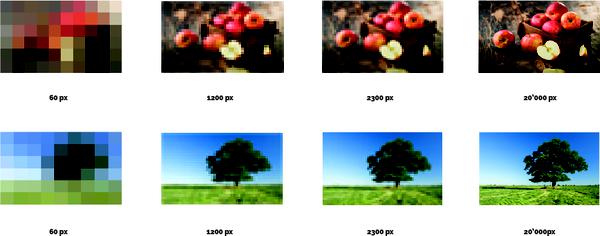A retinal implant that is more effective against blindness

© Matthieu Gafsou
EPFL researchers have developed a new type of retinal implant for people who have become blind due to the loss of photoreceptor cells in their retinas. The implant partially restores their visual field and can significantly improve their quality of life.
Thirty-two million people around the world are blind. Between 2 and 4 million of them owe their condition to the loss of light-sensitive cells in their retinas. The most promising treatment for this type of blindness is a retinal implant containing electrodes that electrically stimulate the retinal cells. “But current implants produce very poor results, and their wearers are still considered legally blind,” says Diego Ghezzi, who holds the Medtronic Chair in Neuroengineering (LNE) in EPFL's School of Engineering. “In order to lead what is considered a ‘normal’ life, the implantee must recover a visual field of at least 40 degrees. Current implants achieve only 20 degrees."
The LNE researchers have come up with a pioneering, wireless implant made of a highly flexible and pliable material and containing photovoltaic pixels. It is expected to provide wearers with a visual field of 46 degrees along with much better resolution. These findings were recently published in Nature Communications.
Poor results from existing implants
The retinal implants currently available consist of a grid of electrodes placed directly on the retina. The implants are wired to a pair of glasses and a camera and to a portable microcomputer. The camera captures images that enter the implantee’s field of vision and sends them to the computer, which turns them into electrical signals that it transmits to the electrodes. The electrodes stimulate the retinal ganglion cells based on the light patterns detected in the field of vision. The implantee then has to learn how to interpret the incoming visual sensations in order to ‘see’ the images. The more numerous and detailed the patterns, the easier it is for the wearer to recognize them.
A larger surface area means more pixels
EPFL’s implant, like conventional implants, is composed of an array of pixels, glasses and a camera – but no wires. It also has a larger surface area designed to widen the visual field and improve image quality. The greater size also means that more retinal cells will be stimulated by the photovoltaic pixels. “This will expand the field of vision,” says Laura Ferlauto, a scientist at the LNE. “Existing implants only stimulate cells at the center of the retina.” Naïg Chenais, a PhD student at the lab, adds: “It also means we can increase the number of photovoltaic pixels, which will sharpen the images.”

The same image looks very different, depending on how many pixels are available.
Surgical constraints
Until now, the size of retinal implants was limited mainly by the length of the surgical incision in the eye. “The cut has to be as small as possible to avoid damaging the tissue,” says Chenais. To get past this hurdle, the researchers chose to work with an extremely flexible material. This enables the implant to be folded during surgery, so a larger implant can be inserted without having to lengthen the incision. The material is a transparent, non-toxic polymer that is already used in the medical field. “Because the polymer is flexible, the implant can bend to the curvature of the eye and be in greater contact with the retinal ganglia,” adds Marta Airaghi Leccardi, another PhD student at the LNE.
Photovoltaic pixels and no wires
The researchers were able to make their implant wireless by replacing the electrodes with photovoltaic pixels. Unlike electrodes, the solar-powered pixels generate an electric current themselves and do not require an external energy source. The light captured by the camera therefore no longer needs to be transformed into electrical signals. Instead, it needs to be magnified in order to be detected and processed by the photovoltaic pixels. “The pixels will only react to light signals that meet certain requirements in terms of intensity, duration and wavelength,” says Ferlauto. “Natural light alone isn’t enough.” A second advantage of photovoltaic pixels is that they take up less space than electrodes. More of them can fit on the implant, which further boosts both visual acuity and the field of vision.
In the first round of tests, the prototype proved to be non-toxic and to successfully increase the visual field and visual acuity. The next step will be in vivo trials to look into other factors such as how the pixels behave and how long the implant will last. “It will also be interesting to see how well humans adapt to this new way of seeing, which is unlike our natural vision,” concludes Ferlauto.
“Design and validation of a foldable and photovoltaic wide-field epiretinal prosthesis”, Nature Communications, Laura Ferlauto1, ‡, Marta J. I. Airaghi Leccardi1, ‡, Naïg A. L. Chenais1, ‡, Paola Vagni1, Michele Bevilacqua1, Thomas J. Wolfensberger2, Kevin Sivula3 and Diego Ghezzi1*
1 Medtronic Chair in Neuroengineering, Center for Neuroprosthetics, Institute of Bioengineering, School of Engineering, École Polytechnique Fédérale de Lausanne, Switzerland
2 Hôpital Ophtalmique Jules Gonin, University of Lausanne, Switzerland
3 Laboratory for Molecular Engineering of Optoelectronic Nanomaterials, Institute of Chemical Sciences and Engineering, School of Basic Sciences, École Polytechnique Fédérale de Lausanne, Switzerland
This study received funding from the European Commission (EU project 701632), the Fondation Pierre Mercier pour la science and Velux Stiftung (project 1102).